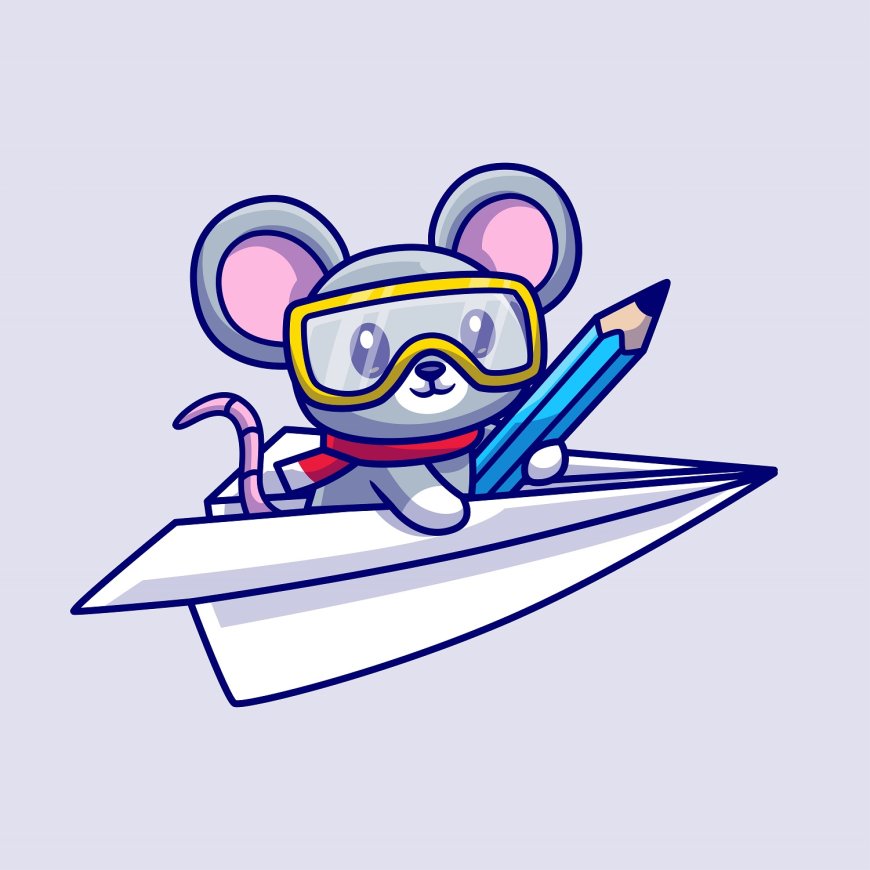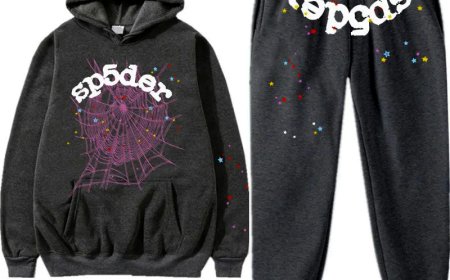The Power of Playfulness How Cartoon Logos Create Memorable Brand Identities
With the right design, your cartoon logo can become a beloved symbol that leaves a lasting impression on your audience.

Introduction
Cartoon logos are a powerful tool in branding, bringing a sense of fun, creativity, and approachability to a brand’s identity. These logos use whimsical, illustrated characters and playful designs to capture attention and create an emotional connection with audiences. Whether for a children’s brand, a tech startup, or a casual eatery, cartoon logos can convey personality and charm in a way that more traditional logos cannot. In this post, we’ll explore the benefits of cartoon logo design, how expert designers craft these engaging logos, and the key elements that make cartoon logos effective in building strong brand identities.
The Appeal of Cartoon Logos
Cartoon logos have a unique appeal that sets them apart from other types of logos. Here’s why they are so effective:
- Instant Connection with Audiences: Cartoon logos create an immediate emotional connection with audiences, especially with younger demographics. The playful and friendly nature of cartoon characters makes the brand more relatable and approachable.
- Versatility Across Industries: While often associated with children’s brands, cartoon logos are versatile and can be used across various industries. From tech companies to food brands, a well-designed cartoon logo can make a brand stand out and appeal to a wide audience.
- Memorability: The distinctive and often whimsical nature of cartoon logos makes them more memorable. Audiences are likely to remember a brand with a fun and engaging logo, leading to stronger brand recognition and recall.
- Conveying Brand Personality: Cartoon logos are excellent for conveying a brand’s personality. Whether it’s playful, quirky, or adventurous, the character or illustration can embody the brand’s core attributes and make a lasting impression.
- Encouraging Brand Loyalty: The charm and approachability of a cartoon logo can foster brand loyalty. When audiences feel an emotional connection to a brand’s logo, they are more likely to develop a sense of loyalty and affinity towards the brand.
How Expert Designers Create Cartoon Logos
Creating a cartoon logo requires a blend of artistic skill, creativity, and a deep understanding of the brand’s identity. Here’s how expert designers approach the process:
- Understanding the Brand’s Vision: The first step is to understand the brand’s vision, values, and target audience. This ensures that the cartoon logo aligns with the brand’s identity and resonates with its intended demographic.
- Character Development: In many cases, cartoon logos feature a character or mascot. Designers work on developing a character that embodies the brand’s personality, whether it’s a friendly animal, a quirky human, or an abstract creature. The character’s expression, pose, and attire are carefully designed to reflect the brand’s attributes.
- Illustration Style: The illustration style is crucial in defining the overall feel of the cartoon logo. Whether it’s a detailed, hand-drawn look or a minimalist, vector-based design, the style should align with the brand’s identity and appeal to the target audience.
- Color Palette: Colors play a significant role in cartoon logos, often using bright, vibrant hues to enhance the playful and engaging nature of the design. Designers choose colors that not only complement the character but also evoke the desired emotions.
- Typography: The typography in a cartoon logo should complement the illustration, maintaining a cohesive look. Playful, rounded fonts are often used to match the light-hearted nature of the cartoon character, but the typography must also ensure readability.
- Balancing Detail and Simplicity: While cartoon logos often involve detailed illustrations, it’s important to maintain simplicity to ensure the logo is easily recognizable and effective across different sizes and mediums.
Key Elements of an Effective Cartoon Logo
To create a cartoon logo that stands out and effectively represents the brand, several key elements must be considered:
- Character Personality: The character or illustration should have a strong personality that aligns with the brand’s values and appeals to the target audience. The character’s expression, pose, and features should convey the brand’s message clearly.
- Consistency with Brand Identity: The cartoon logo should be consistent with the overall brand identity, including the color palette, typography, and style. This consistency ensures that the logo fits seamlessly into the brand’s visual language.
- Simplicity and Clarity: Despite the playful nature of cartoon logos, they should remain simple and clear. Overly complex designs can become cluttered and lose their impact, especially when scaled down for smaller formats.
- Emotional Appeal: Cartoon logos should evoke positive emotions, such as joy, curiosity, or excitement. The character or illustration should be designed to create an immediate and lasting emotional connection with the audience.
- Versatility: The cartoon logo should be versatile enough to work across various platforms and mediums, from packaging and merchandise to digital media and print. The design should maintain its impact and recognizability, regardless of where it’s used.
Examples of Successful Cartoon Logos
Several well-known brands have successfully used cartoon logos to build strong brand identities. Here are some examples and what makes them effective:
- Kellogg’s Frosted Flakes (Tony the Tiger): Tony the Tiger is one of the most recognizable cartoon mascots in the world. His friendly, energetic personality and bold, colorful design have made the Frosted Flakes logo instantly recognizable. The character’s positive and enthusiastic expression aligns perfectly with the brand’s message of a fun and nutritious breakfast.
- Michelin (Bibendum, the Michelin Man): The Michelin Man, also known as Bibendum, is an iconic cartoon character that has represented the Michelin brand for over a century. His distinctive, tire-shaped body and friendly demeanor convey reliability and comfort, making the brand approachable and trustworthy.
- Mailchimp: Mailchimp’s logo features a cartoon chimp named Freddie. The playful and quirky design reflects the brand’s approachable and user-friendly ethos. Freddie’s cheerful expression and casual appearance make the logo memorable and relatable, perfectly aligning with the brand’s identity.
- Planters (Mr. Peanut): Mr. Peanut, the monocle-wearing peanut mascot, is a classic example of a cartoon logo that has stood the test of time. His sophisticated yet playful persona and timeless design have made him an enduring symbol of the Planters brand.
- Nintendo (Mario): Mario, the iconic character from Nintendo, is a perfect example of a cartoon logo that has become synonymous with the brand. His cheerful expression, bright colors, and distinctive mustache have made him one of the most recognizable characters in gaming, embodying the fun and adventurous spirit of Nintendo.
Tips for Creating an Effective Cartoon Logo
If you’re considering a cartoon logo for your brand, here are some tips to ensure it’s effective and memorable:
- Define Your Character’s Role: Determine the role of the cartoon character in your logo. Is it a mascot that will represent your brand across all touchpoints, or a one-time design for a specific campaign? This will guide the design process.
- Focus on Expression and Emotion: The character’s expression is key to conveying the right emotions. Ensure that the character’s face and posture communicate the desired feelings, whether it’s joy, curiosity, or friendliness.
- Choose Colors Wisely: Use a color palette that enhances the character’s personality and aligns with your brand’s identity. Bright, bold colors are often effective in cartoon logos, but make sure they are harmonious and visually appealing.
- Ensure Scalability: The cartoon logo should be easily recognizable at all sizes. Test the logo in different formats to ensure that the details remain clear and the character retains its impact when scaled down.
- Keep the Design Balanced: While cartoon logos can be playful and detailed, it’s important to maintain balance and simplicity. Avoid overcrowding the design with too many elements, which can make the logo look cluttered.
Conclusion
Cartoon logos offer a unique and powerful way to create a memorable brand identity that resonates with audiences. By combining creativity, personality, and emotion, cartoon logos can make a brand more approachable, engaging, and recognizable. Whether you’re creating a mascot for a children’s brand, adding a playful touch to a tech startup, or looking to refresh your brand’s visual identity, working with expert logo design can help you craft a cartoon logo that truly captures the essence of your brand. With the right design, your cartoon logo can become a beloved symbol that leaves a lasting impression on your audience.
What's Your Reaction?

















![Noots Focus Reviews [Truth Exposed 2025]!](https://news.bangboxonline.com/uploads/images/202501/image_430x256_678e3b94881a1.jpg)
![Vivalis Male Enhancement: The Must-Know Ingredients [2025 Update]](https://news.bangboxonline.com/uploads/images/202501/image_430x256_678e3b54e396c.jpg)







